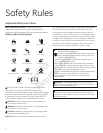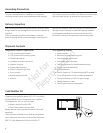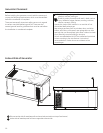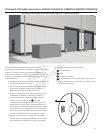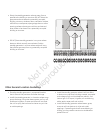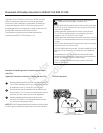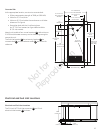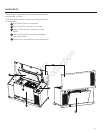
Not for
Reproduction
11
Placement of Standby Generator to REDUCE THE RISK OF CARBON MONOXIDE POISONING
The figure below displays POTENTIAL points of entry for Carbon Monoxide Gas.
All fossil fuel burning equipment, such as standby
generators, contains carbon monoxide (CO) gas in the engine
exhaust. CO gas is odorless, colorless and tasteless and is
unlikely to be noticed until a person is overcome. CO gas can
kill you so it is required that the following is included as part
of the installation:
• Install generator outdoors in an area that will not
accumulate deadly exhaust gas.
• DO NOT install generator where exhaust gas could
accumulate and enter inside or be drawn into a
potentially occupied building or structure.
• By law it is required in many states to have a Carbon
Monoxide (CO) detector in operating condition in
homes and other structures occupied by people.
Carbon monoxide detector(s) (A) MUST be
installed and maintained indoors according to the
manufacturer’s instructions / recommendations. A
CO monitor is a sensor that detects hazardous levels
of CO. When there is a buildup of CO, the monitor will
alert the occupants by flashing visual indicator light
and alarm. Smoke alarms cannot detect CO gas.
• Nearby structures may be exposed to the engine
exhaust from your standby generator and must be
considered when installing your standby generator.
• Ensure exhaust gas is kept away from:
B overhead doors
C doors
D windows (not shown)
E other openings that can allow exhaust gas to enter
inside or be drawn into a potentially occupied building
or structure (not shown).
A
A
B
C
D
E
B B
C




